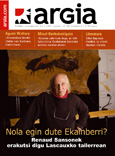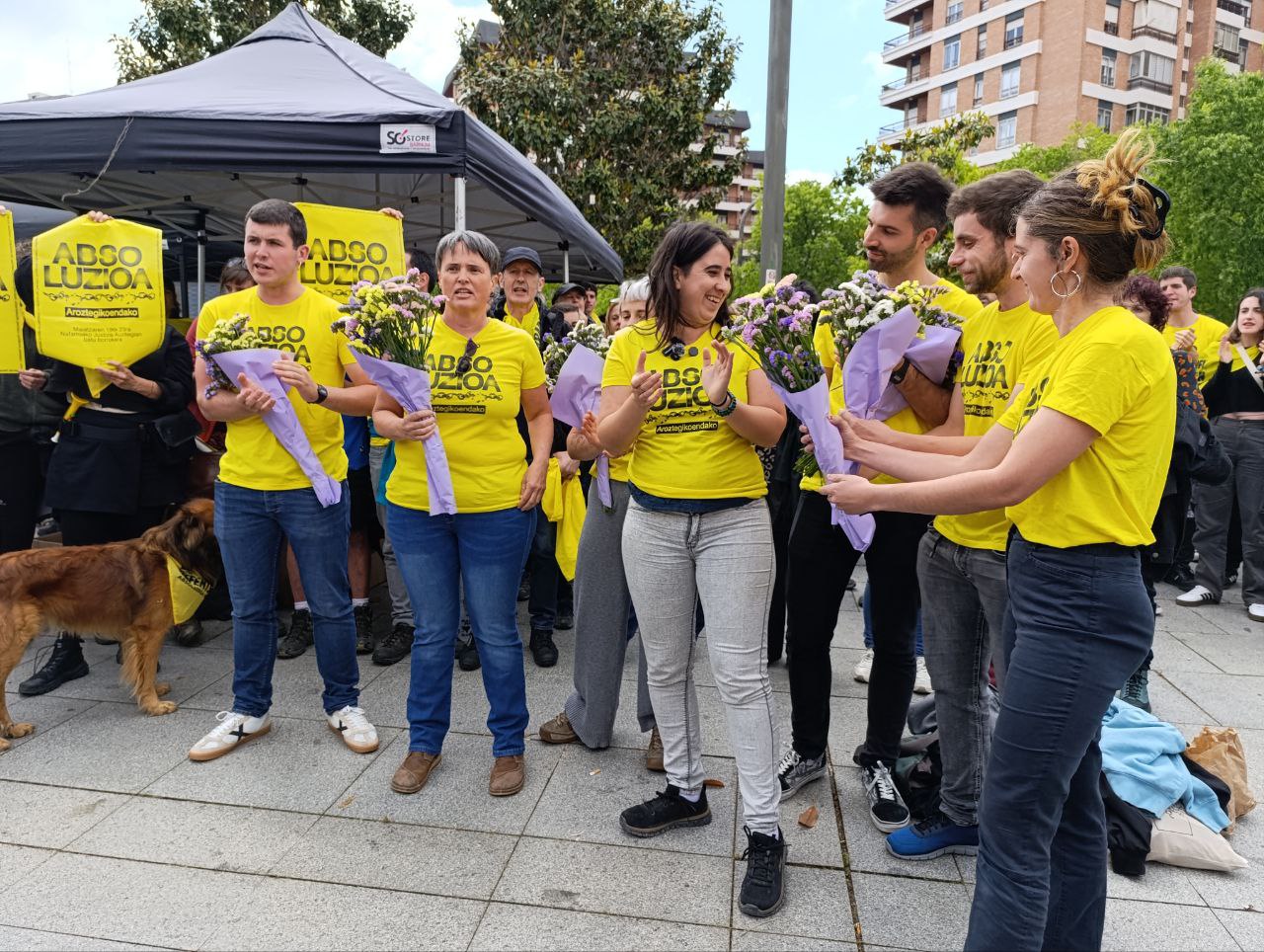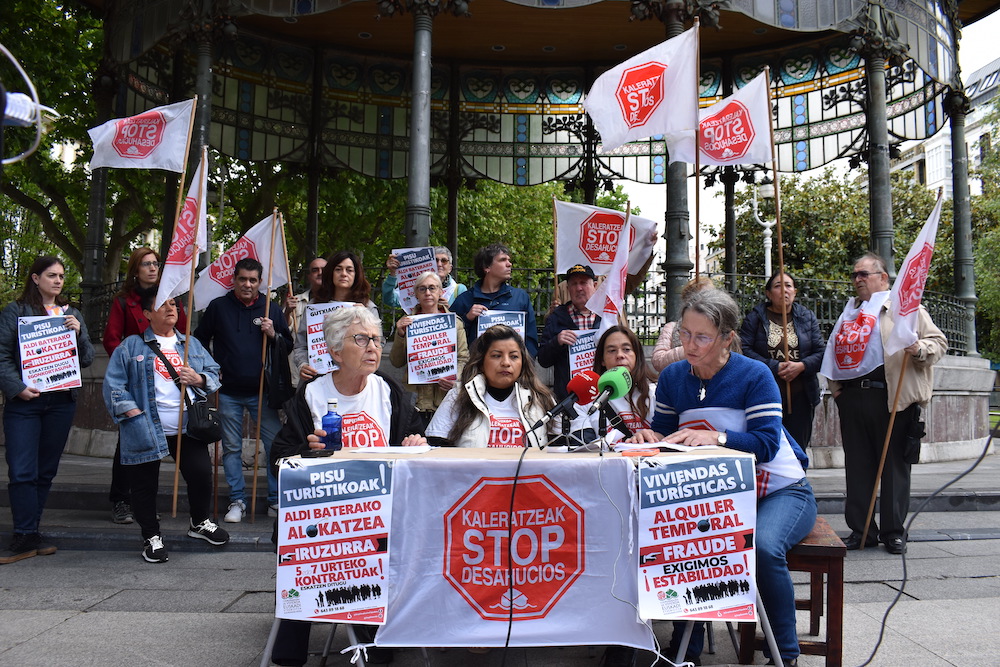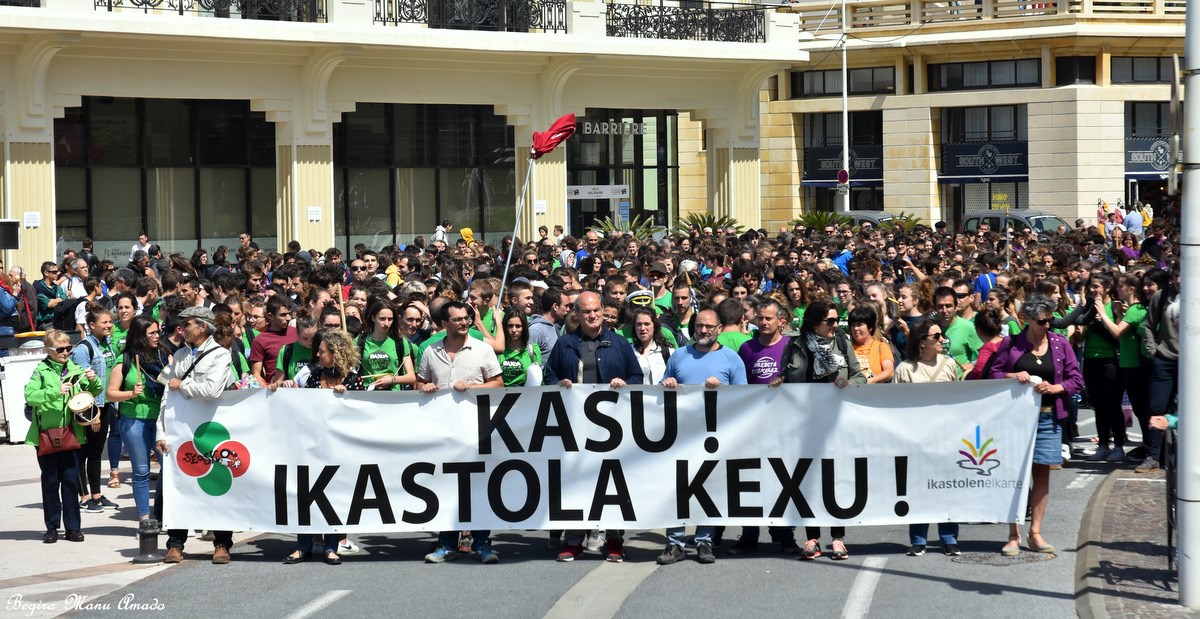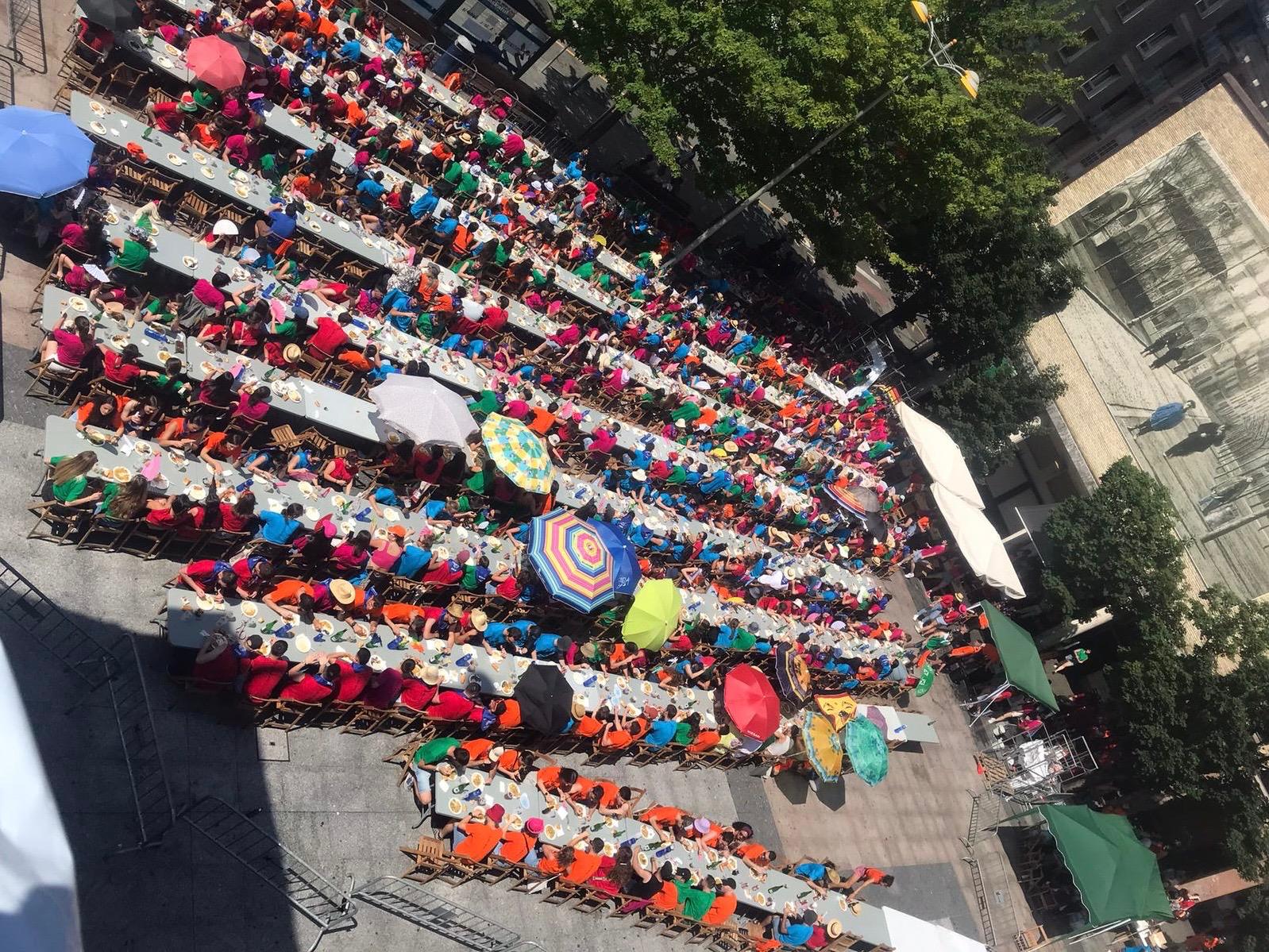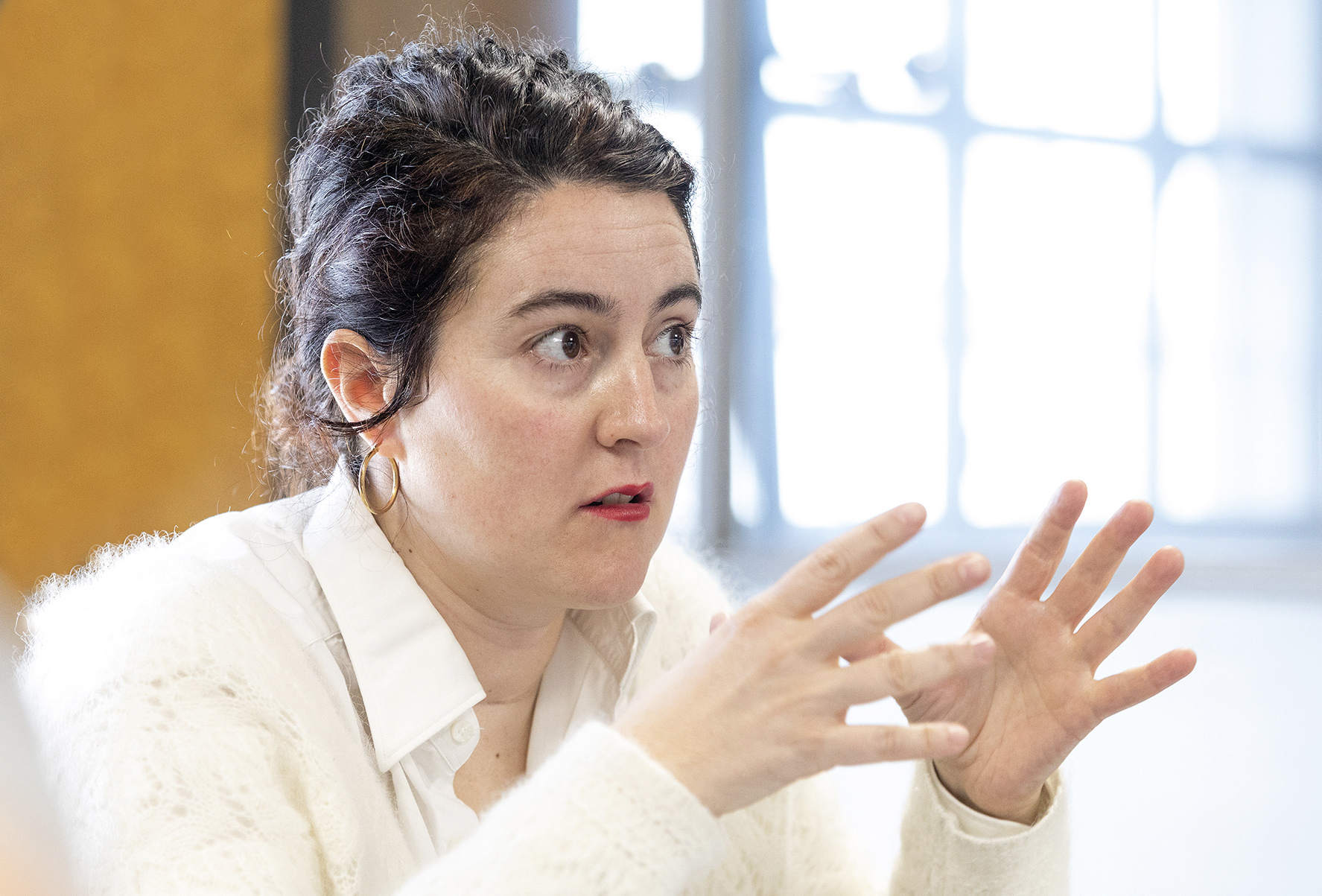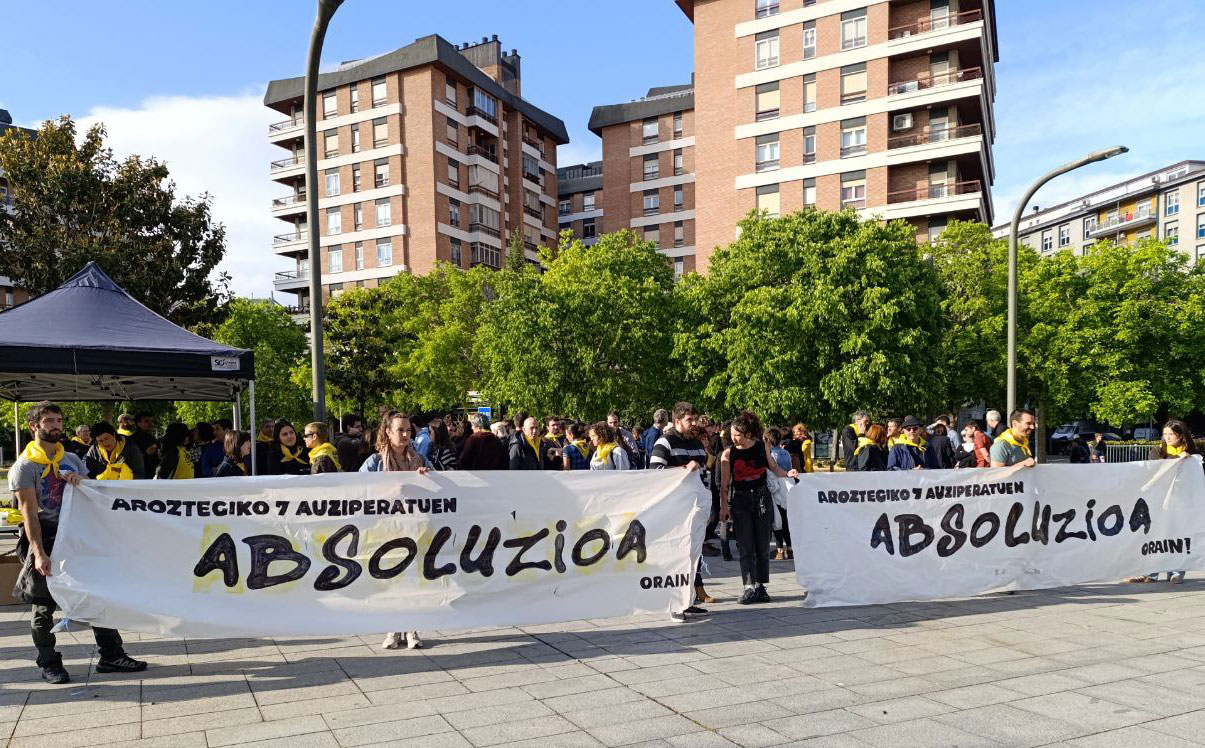Society
Environment
Politics
Economy
Culture
Basque language
Feminism
Education
International
Opinion
sunday 25 may 2025
Automatically translated from Basque, translation may contain errors. More information here. 
Altza: waiting to be annexed to the Basque language
- The Altza neighborhood was a green paradise. It is said that in the area of Zilargiñene there is the greatest number of Albacete; a tree on the banks of rivers and streams. Now the cement reigns. For hundreds of years it was a Basque village, but in a few decades of the 20th century it was completely circumcised.
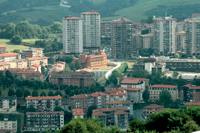
Argia
Located on a hill with an altitude of one hundred meters, Altza has historically had an extension of 14.5 square km. It reached to the plots of San Sebastián, Pasaia, Errenteria and Astigarraga.
The conflict between San Sebastian and Altza has been going on for a long time. Between 1821 and 1823, Altza officially gained independence. It became clear that it had a sufficient number of inhabitants, since it had about 150 farms on its land, which not only defined fixed limits, but also created the town hall. In 1910, it was awarded the title of Villa, but it could only be maintained until 1940. With the wars of 1936 and tensions with San Sebastián, the economy of Alza was weakened. Thus, the capital of Gipuzkoa was able to take advantage of the situation and achieve the long-awaited annexation.
Today the neighborhood of San Sebastian has a cementitious face, it was transformed into a forest full of houses. Urbanistically and socially, Altza has undergone tremendous changes. They built houses and towers everywhere and in any case, buried streams, set up landfills... They took advantage of every piece of green space in a negligent way. When it was their turn to build the highways, a number of farms were discarded. In the territory of the historic Alza there were 150 farms and today 57 are still standing. It seems that urbanism will once again devour the countryside in Alza. In fact, with the urban planning project Auditz Akular, which the City Council of Donostia-San Sebastián wants to carry out, it remains to be seen what the new appearance of Altza will be.
In the 1950s, Altza experienced significant demographic growth due to immigration. According to the data of the historian Antonio Cañamero Redondo, in the historical Altza, in 1950, there were 8,857 people and in 1960, 16,413. 26 years later, in 1986, 44,384 people. In particular, immigrants came to Alza from the provinces of A Coruña, Pontevedra, Cáceres, Salamanca and Badajoz. Due to this and other factors, the situation of the Basque language in Altza was worrying at that time. To better understand the situation of the Basque language in Alzira, we turn to the writer from Alzira, Joan Mari Irigoien, and collect his vision: “Although there was a Basque atmosphere in Altea, I don’t think there was much talk of Basque. In Alza there was a marked tendency to resort to the herd. As Franco won the war and banned Basque, people were deeply afraid. I know people from the farm who have not studied Basque because, on the one hand, they were afraid, as I said before, and on the other hand, they felt engaged, perhaps, because the people of the street considered him a cashero...”
First steps towards standardisation
As I said, the situation of the Basque language in the 1960s caused a great deal of concern and several of the locals fought to recover the Basque language. The fruits of this work were the creation of the Popular Dream Ikastola, the Basque language schools, the offer of night classes for the Basque language adults, the creation of dialects, etc. The great work carried out by the social movement of the Basque Country in the 1970s and 1980s made the population aware of the need to recover the Basque language. Thus, at the beginning of the 90s, knowledge of the Basque language took a step forward; more and more parents were enrolling children in the D model, the number of students in the Basque language schools was constantly increasing, and the first steps were taken to Basque work.
By the end of the 90s the situation was less optimistic. There were advances in the knowledge of the Basque language, as more Basques came out of schools and Basque language centres, but their linguistic capacity was weak and there were still few Basques. In addition, the use of Basque in Alza was almost impossible. Therefore, in order to accelerate the recovery of the Basque language in Alza, several local Basque organizations and some Basque speakers formed the Bai Euskarari Committee of Alza in 1999. The Council of Basque Social Organizations was informed that they also wanted to develop the Bai Euskarari Agreement and the Commitment Process in Alza. In 2000, the Council approved the participation of Altza in the project. Through this initiative, local companies, businesses and all kinds of entities, together with the local council, led the process of commitment through the elaboration of a Strategic Plan of Basque at the local level. The Bai Euskarari Committee of Alza was dissolved and the Bizarro Cultural Association was created and legalized in 2001. Bizarro signed a collaboration agreement with the City Council of Donostia-San Sebastián in the same year, and since then the agreement has been renewed every year to work towards the normalization of the Basque language in Alza. The association has been working for seven years to ensure that the Basque language is used normally in different sectors of the neighborhood.
Looking to the future
A long journey to the Basque Country is inevitably foreseen. In the infogram on this page you can see what is the linguistic competence of Alza according to the system of linguistic indicators of the Basque Country. In any case, it will be the children of the schools of Altza, Altza, Herrera and Oleta, who can give life to the Basque language. Joan Mari Irigoien, a writer from Altea, said: “I’m surrounded by people from outside. I always give my first word to my children and it gives me joy to see them follow me. I guess that's where the hope is. Better or worse times will come, but we must always keep the torch of language lit. And the future will tell.”
Most read
Using Matomo
#1
#2
#3
Xabier Letona Biteri
#4
Nagore Irazustabarrena Uranga
Newest
2025-05-23
Xabier Letona Biteri
Chronicle of the Carpentry Trial (Day Five)
Without evidence, a harsh demand for punishment on the defendants
The Prosecutor and the Private Prosecution have confirmed the criminal charges against the seven defendants, who are sentenced to 46 months in prison and 56,000 euros in compensation for damages to the companies. The defendants’ lawyers have asked for their acquittal. The... [+]
2025-05-23
Maria Ortega Zubiate
Spanish government approves the largest photovoltaic power plant in Álava
231,000 panels will be installed across 100 hectares in the southwest of Álava: In Armiñón. EUskal will be the second largest solar park in the village.
2025-05-23
Gedar
New attempt to ban political prisoners in Spain
The PP has also proposed in the Senate to increase blackmail so that Basque political prisoners have to show remorse.
2025-05-23
ARGIA
The company that has signed Arantxa Tapia will design the government’s €1 billion investment
On May 22, the Basque Parliament approved a bill to indebt one billion euros to “influence science, technology, business and the industrial sector”. The media outlet Nago reported that the Basque Government has asked KPMG Asesores SL to develop the plan, which recently hired... [+]
2025-05-23
Irutxuloko Hitza
San Sebastian’s Stop Dismissal denounces the “fraud” of temporary rental contracts
A tenant from the Old Town of San Sebastian has managed to convert the rental contract for 11 months into a legal contract for five years.
2025-05-23
Maria Ortega Zubiate
Netanyahu Says ‘Palestine Liberated’ Today’s ‘Heil Hitler’
Netanyahu made statements after two employees of the Israeli embassy in Washington were shot dead. The Israeli Government has directly linked the Washington attacks to the statements of several European heads of Government against the massacre in Gaza.
2025-05-23
Jenofa Berhokoirigoin
French Education Minister Urged by Northern Basque Country Parliamentarians to Empower Seaska’s Resources
On 21 May, a letter was sent to the French Minister of Education, Elisabeth Borne, by the six parliamentarians of the Northern Basque Country. In view of the number of students there, the letter deplores the fact that the positions planned for the schools are "far too few".
2025-05-23
Elhuyar
Few companies in the global North are primarily responsible for conflicts related to the extraction of natural resources
Only one hundred multinational companies are behind 20% of all conflicts related to the extraction of natural resources, according to a study carried out by the Autonomous University of Barcelona. Research has shown that companies in countries in the global North are aware of... [+]
2025-05-23
Olaia L. Garaialde
"If we learn to eat with many rules, we may not notice the needs of the body"
The psychopedagogue Mireia Centeno Gutiérrez has given some clues about the feeding of children, such as the consequences of forcing them to eat and banning food.
2025-05-22
Xabier Letona Biteri
The defendants say that by group decision, everything was done peacefully.
The defendants testified on Thursday, and their statements could be summarized as follows: The citizens who gathered in the square of legumes or in the camping area decided collectively what to do, in general, to go to the field of the works and put them passively in... [+]
Eguneraketa berriak daude









